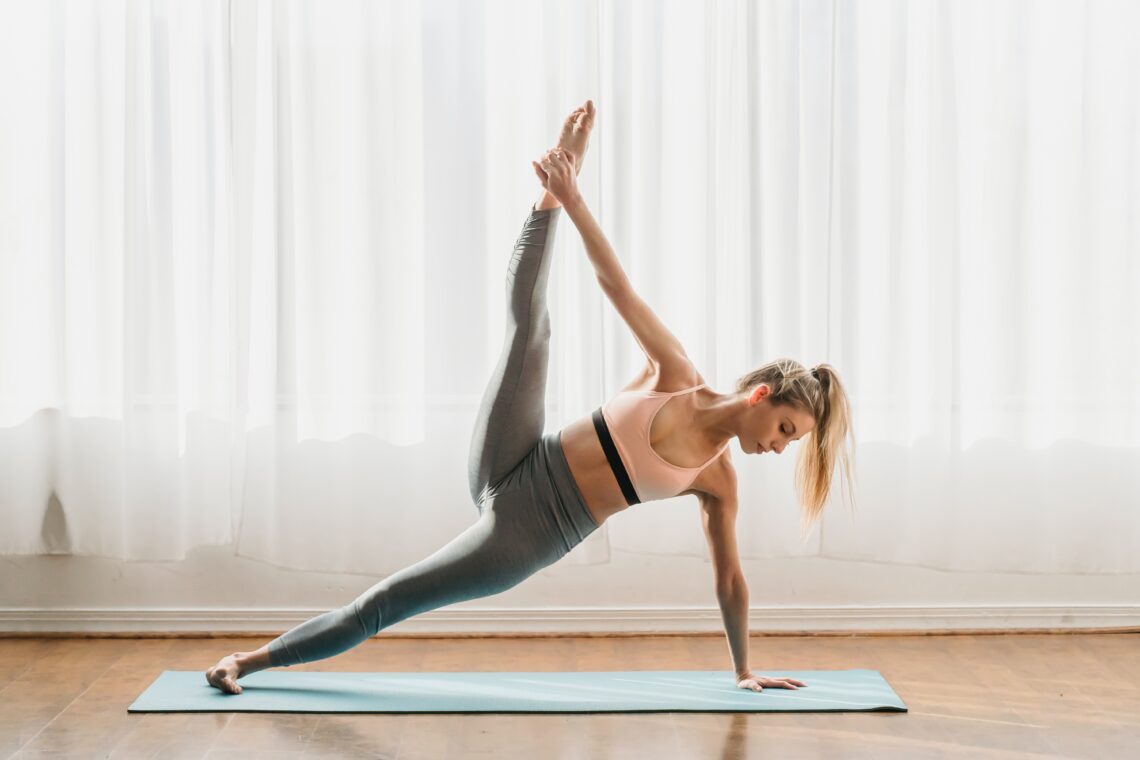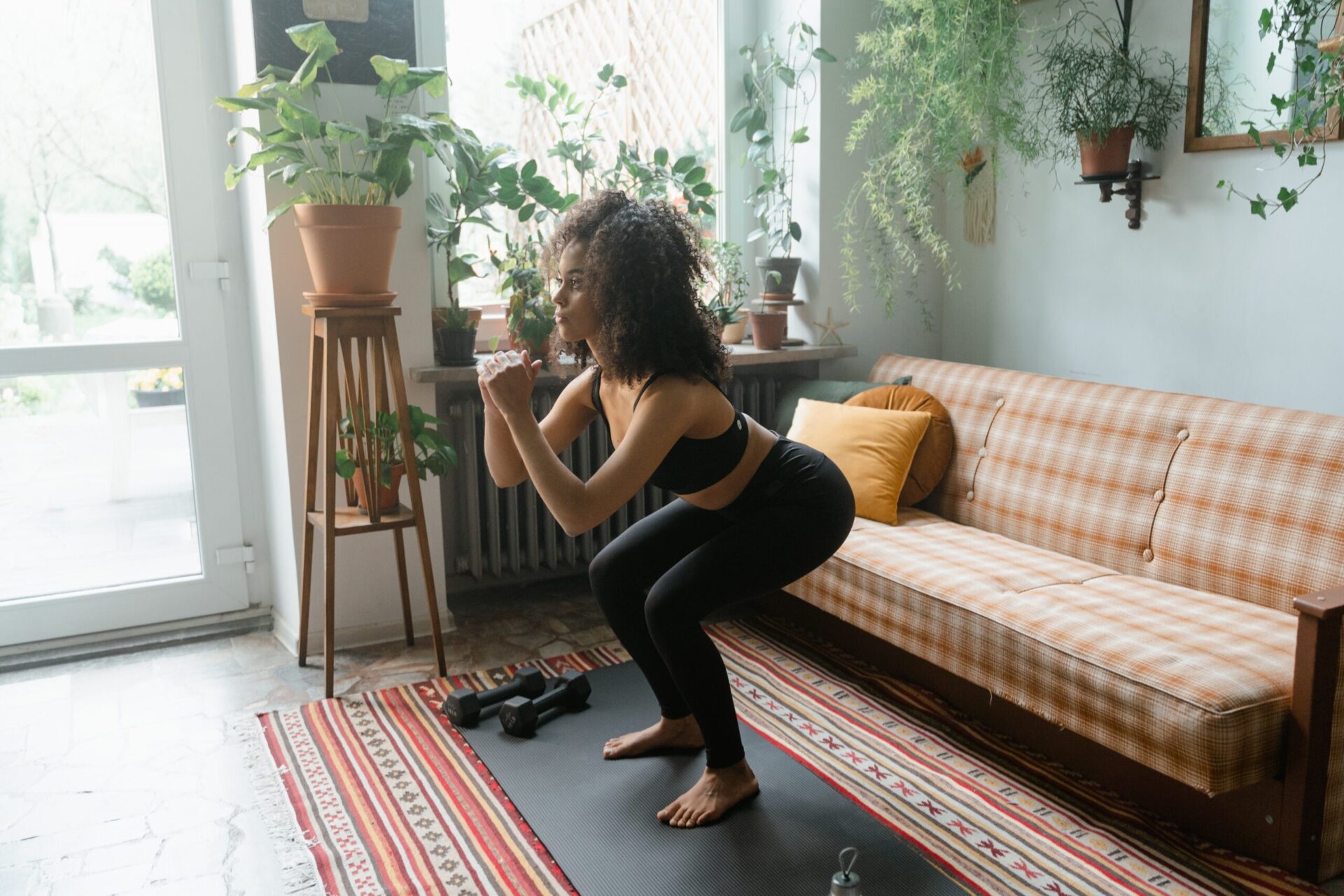
Build Strong And Toned Legs With These Home Workouts
When it comes to achieving a well-rounded and powerful physique, strong and toned leg muscles often take center stage. Our lower body not only supports our daily activities but also contributes significantly to overall strength and stability.
While hitting the gym might not always be feasible, especially in today’s fast-paced world, home workouts present an accessible and effective solution for leg muscle development.
In this comprehensive blog, we will walk you through a variety of effective leg muscle exercises that you can do in the comfort of your own home. We’ll also cover proper form, benefits, and more while providing a well-rounded leg workout routine to help you achieve your fitness goals.
Basic Principles of Leg Muscle Building
Understanding the principles underlying effective leg muscle building is essential for a successful fitness journey. Building leg muscles isn’t just about doing squats until you collapse. It’s about understanding the science behind muscle growth and applying it strategically.
Understanding Muscle Groups in the Legs
Your legs are like a team of superheroes, each with a unique power. We’re talking quads, hamstrings, calves, and glutes—all working in harmony to keep you moving and grooving.
Each group plays a distinct role in leg movement and stability. Tailoring your workouts to target these groups individually is crucial for balanced and comprehensive muscle development.
Importance of Progressive Overload for Muscle Growth
Think of your leg muscles as enthusiastic students in a gym class. They thrive on challenges! The concept of progressive overload is all about pushing your muscles a little harder each time.
Whether you’re using weights, resistance bands, or just your body weight, this gradual increase in intensity is what makes your leg muscles go, “Challenge accepted!”
Importance of Leg Muscle Strength
Leg muscles are among the largest and most powerful muscles in your body, and they play a crucial role in various aspects of your life:
Everyday Functionality: Strong leg muscles are the foundation of daily activities like walking, climbing stairs, and even getting out of bed. They provide the necessary support and stability for these movements.
Athletic Performance: For athletes, whether you’re a runner, cyclist, or participate in team sports, leg strength is a game-changer. It can boost your speed, agility, and endurance.
Balanced Physique: Building leg strength helps create a balanced and symmetrical physique. Neglecting leg muscles can lead to muscle imbalances and potential injuries.
Metabolic Boost: Leg muscle exercises engage large muscle groups, which can increase your metabolic rate. This means you’ll burn more calories even at rest.
Injury Prevention: Strengthening your leg muscles can help prevent common injuries such as strains, sprains, and even knee issues. It also enhances joint stability.
Benefits of Leg Muscle Exercises at Home
Before we dive into the specific exercises, let’s take a moment to understand why strengthening your leg muscles is essential. Strong legs offer numerous benefits, i
Convenience: Home leg workouts bring the gym to your doorstep. No need to battle traffic or brave the weather; your workout is just a few steps away.
Privacy: Working out at home provides a private and comfortable environment. You can exercise without feeling self-conscious, allowing you to focus on your routine.
Time Efficiency: Home workouts save you precious time. You can start exercising immediately, bypassing the time-consuming commute to a gym.
Cost Savings: Skip the expensive gym memberships and transportation costs associated with traditional fitness centers. Home workouts are budget-friendly.
Customization: Tailor your leg workouts to your fitness level and goals. You have the flexibility to create routines that suit your specific needs.
Comfortable Environment: Design a workout space that aligns with your preferences. Whether it’s in your living room or backyard, you have control over your exercise environment.
Family Involvement: Encourage family members to join in on home workouts, promoting a healthier lifestyle and strengthening family bonds through fitness.
Consistency: Eliminate barriers to regular exercise. The ease of access at home makes it more likely that you’ll stick to your workout routine, ultimately yielding better results.
Bodyweight Exercises
Squats: Form and Benefits
Squats are a foundational leg exercise that targets the quadriceps, hamstrings, and glutes. To perform squats correctly, follow these steps:
- Stand with your feet shoulder-width apart, toes pointing slightly outward.
- Keep your chest up, and shoulders back, and maintain a natural curve in your lower back.
- Initiate the squat by pushing your hips back, as if sitting back into a chair.
- Bend your knees and lower your body until your thighs are parallel to the ground, or as far as your flexibility allows.
- Ensure your knees are tracking over your toes, not caving inward.
- Push through your heels to return to the starting position.
Benefits:
Squats are a versatile exercise that not only strengthens your leg muscles but also engages your core for stability. They help improve balance and posture and can be adapted to various fitness levels.
Lunges: Proper Execution and Advantages
Lunges are excellent for working the quadriceps, hamstrings, and glutes. Here’s how to perform a lunge correctly:
- Stand with your feet together.
- Take a step forward with one leg, ensuring your knee is at a 90-degree angle.
- The back knee should hover just above the ground.
- Push through the front heel to return to the starting position.
- Repeat on the other leg.
Benefits:
Lunges not only build leg strength but also enhance balance and coordination. They can be modified to suit your fitness level and can be done in various directions for added variety.
Step-Ups: Technique and Muscle Engagement
Step-ups are an effective way to target your leg muscles and improve lower body strength. Follow these steps for proper execution:
- Find a sturdy surface, like a low chair or step.
- Place one foot on the chair or step.
- Push through the heel of the elevated foot to lift your body onto the surface.
- Bring your other foot up to join it.
- Step back down and repeat, alternating legs.
Benefits:
Step-ups primarily work the quadriceps, hamstrings, and glutes. They also challenge your balance and stability.
Glute Bridges: How to Do and Muscle Activation
Glute bridges are an excellent exercise for targeting the gluteal muscles while engaging the hamstrings and lower back. Here’s how to perform them correctly:
- Lie on your back with your knees bent and feet flat on the floor, hip-width apart.
- Place your arms at your sides, palms down.
- Push through your heels to lift your hips off the ground, keeping your feet, shoulders, and upper back on the floor.
- Squeeze your glutes at the top of the movement.
- Lower your hips back down and repeat.
Benefits:
Glute bridges are not only great for strengthening the glutes but also for improving lower back stability and posture.
Equipment-Based Exercises
Wall Sits: Correct Posture and Benefits
Wall sits are a simple yet effective exercise for building leg strength. Here’s how to do them correctly:
- Find a clear wall and stand with your back against it.
- Walk your feet forward, keeping your back against the wall, until your knees are at a 90-degree angle.
- Hold this position for as long as you can, aiming to increase your time with each workout.
Benefits:
Wall sits target the quadriceps and help build endurance in your leg muscles. They are excellent for toning and strengthening the lower body.
Chair Squats: Form and Targeted Muscles
Chair squats are a modified version of squats that can be done with the support of a chair. Here’s how to perform them correctly:
- Stand in front of a sturdy chair with your feet shoulder-width apart.
- Extend your arms forward for balance.
- Lower your body as if you were going to sit in the chair.
- Hover just above the chair, then push through your heels to stand back up.
Benefits:
Chair squats primarily target the quadriceps and glutes while providing stability through the chair support.
Dumbbell Exercises: Goblet Squats, Lunges, and Step-Ups with Weights
If you have dumbbells at home, you can take your leg workouts to the next level. Here are three effective exercises to try:
- Goblet Squats: Hold a dumbbell close to your chest as you perform squats, adding resistance to the movement.
- Dumbbell Lunges: Hold a dumbbell in each hand as you perform lunges, increasing the challenge for your leg muscles.
- Dumbbell Step-Ups: Hold a dumbbell in each hand while doing step-ups to make this exercise more demanding.
Benefits:
Adding dumbbells increases the resistance, making these exercises more effective for building leg muscle strength.
Plyometric Exercises
Jump Squats: Technique and Explosive Power
Jump squats are a dynamic exercise that adds an explosive element to your leg workout. Follow these steps for proper execution:
- Begin with a regular squat position.
- Explosively jump up, propelling your body off the ground.
- While in the air, tuck your knees toward your chest.
- Land softly, bending your knees to absorb the impact.
- Immediately go into the next squat and repeat.
Benefits:
Jump squats enhance your explosive power, agility, and cardiovascular fitness, making them a great addition to leg workouts.
Box Jumps: Execution and Athletic Enhancement
Box jumps are another plyometric exercise that requires a sturdy platform. Here’s how to perform them correctly:
- Stand in front of a box or platform with your feet shoulder-width apart.
- Bend your knees and swing your arms as you jump onto the box.
- Land softly on the box, then step back down and repeat.
Benefits:
Box jumps are excellent for developing explosive leg strength and enhancing athletic performance.
Yoga and Stretching
Warrior Poses: Benefits for Leg Strength and Flexibility
Yoga offers a unique approach to leg muscle development through poses like Warrior I and Warrior II. Here’s how these poses can benefit you:
- Warrior I: From a lunge position, extend your arms overhead, and sink into a deep lunge. This pose strengthens the legs and engages the core.
- Warrior II: Open your hips and arms wide, forming a “T” shape with your body. This pose enhances leg strength, balance, and flexibility.
Benefits:
Warrior poses combine leg strength with flexibility, promoting overall physical and mental well-being.
Downward Dog: How It Improves Leg Muscles
Downward Dog, a staple in yoga practice, also contributes to leg muscle strength. Here’s why:
- Begin in a push-up position, then lift your hips upward to form an inverted “V” shape.
- Press your heels toward the ground, stretching the calf muscles and hamstrings.
Benefits:
Downward Dog not only works on leg strength but also enhances flexibility and improves circulation.
Sample Leg Workout Routine at Home
Warm-up and Its Importance
A proper warm-up is required prior to beginning your leg workout to prepare your muscles for exertion. Spend 5-10 minutes on light cardio exercises such as jogging in place, jumping jacks, or dynamic leg stretches. This increases blood flow, elevates your heart rate, and reduces the risk of injury.
Detailed Workout Routine with Sets and Reps
Here’s a sample routine to get you started at home:
Squats: 3 sets of 12-15 repetitions
Lunges: 3 sets of 12-15 repetitions per leg
Step-Ups: 3 sets of 12-15 repetitions per leg
Glute Bridges: 3 sets of 12-15 repetitions
Wall Sits: Hold for 30-60 seconds, repeat 2-3 times
Jump Squats: 3 sets of 10-12 repetitions
Warrior Poses: Hold each pose for 30 seconds, then repeat 2-3 times
Downward Dog: Hold for 30 seconds, repeat 2-3 times
Cool-down: Finish with 5-10 minutes of stretching to improve flexibility and reduce muscle soreness.
Tips for Effective Leg Workouts at Home
Beginner Routine: Getting Started with Simple Exercises
For beginners, starting with foundational exercises is key. Begin with simple exercises like squats, lunges, and step-ups. These fundamental moves lay the groundwork for your leg muscle transformation.
As your strength improves, gradually increase the intensity of your workouts. This can be achieved by adding more repetitions, sets, or even introducing additional resistance through dumbbells or resistance bands
Intermediate Routine: Progressing to More Challenging Movements
As you progress, incorporating variations of these exercises, like Bulgarian split squats or single-leg squats, challenges your muscles further, promoting growth and strength. These moves add complexity and intensity, stimulating your leg muscles to grow stronger.
Advanced Routine: Pushing Limits for Maximum Gains
Advanced routines can involve high-intensity exercises like plyometrics or advanced variations of the basic movements. These routines are like the final boss battle – they push your limits and reward you with jaw-dropping gains.
Nutritional Support for Leg Muscle Growth
Protein-Rich Diet: Fueling Muscle Repair and Growth
Protein is the building block of muscles. Ensuring an adequate intake supports muscle repair and growth, providing the foundation for strong and toned leg muscles.
Hydration and Balanced Nutrition
Staying hydrated and maintaining a balanced diet rich in vitamins and minerals is essential for optimal muscle function and recovery. And while you’re at it, maintain a balanced diet rich in vitamins and minerals to keep those leg muscles in peak condition.
Avoiding Common Mistakes
Overtraining and Inadequate Rest
You might want to conquer the world in a day, but overtraining can be counterproductive. Allow your leg muscles ample time to recover between workouts.
Aim for at least 48 hours before targeting the same muscle group again. Adequate rest enhances muscle growth and reduces the risk of overtraining.
Incorrect Exercise Form and Technique
Performing exercises with incorrect form reduces their effectiveness. Maintaining correct form during exercises is paramount to preventing injuries and ensuring that you’re targeting the intended muscle groups.
Focus on posture, alignment, and controlled movements, and gradually increase intensity. If you experience pain or discomfort, stop the exercise and consult a fitness professional or healthcare provider if needed.
Conclusion
You don’t need a gym or fancy equipment to build strong and toned leg muscles. The combination of bodyweight exercises, equipment-based movements, plyometrics, yoga, and stretching provides a diverse toolkit for building leg muscle strength and overall fitness.
Remember the importance of proper form, progressive overload, and consistency in your fitness journey. Strengthening your leg muscles will improve your physical strength and appearance and contribute to your overall health and well-being.
So, grab your water bottle, find a comfy workout corner, and let those leg muscles embark on a journey of awesomeness. Your legs will thank you, and who knows, you might just become the leg day hero you were always meant to be!


You May Also Like

Dutchmen Port: A Perfect Spot to Celebrate Life!
23 December 2024
The Surprising Health Benefits Of Eating Dark Chocolate
8 October 2023